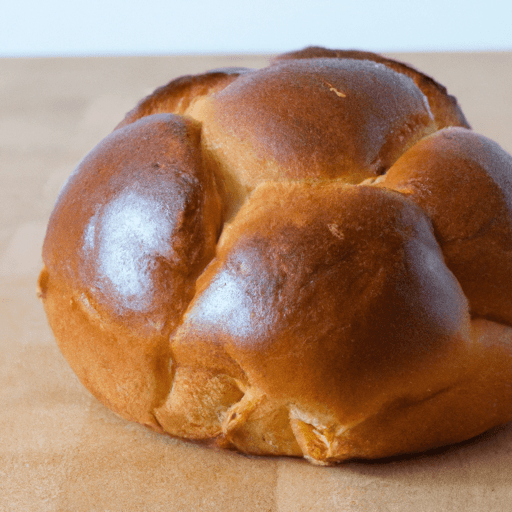The Art of Brioche Buns: A Delicious Delicacy
If you love indulgent, buttery, and versatile baked goods, then the world of brioche buns is sure to capture your tastebuds. With its delicate texture and rich flavor, the brioche bun has become a staple in kitchens and cafes around the globe. In this article, we will explore the wonders of these golden beauties, from their heavenly taste and various uses in cooking to their nutritional value and intriguing history.
Taste: A Butter Lover’s Dream
Brioche buns are renowned for their irresistible taste that strikes a perfect balance between richness and lightness. Made with a generous amount of butter, eggs, sugar, and a touch of milk, these buns offer a distinctively tender and slightly sweet experience. The soft and airy crumb, coupled with a beautifully golden crust, creates a mouthwatering sensation that is hard to resist.
Versatile Applications in Cooking
Whether you’re planning a fancy brunch or a casual burger night, brioche buns have got you covered. Their versatility allows them to shine in both sweet and savory recipes. Here are just a few of the many ways you can enjoy these delectable buns:
Burger Bliss: Upgrade your burger game by swapping regular buns for brioche. The buttery goodness adds an extra layer of flavor that complements the juicy patty perfectly.
Sandwich Sensation: From classic deli sandwiches to gourmet creations, brioche buns elevate any filling. Think pulled pork, crispy chicken, or even a simple egg sandwich. The possibilities are endless!
French Toast Extravaganza: Not just any bread will do for the perfect French toast. Brioche buns, with their rich flavor and light texture, turn this breakfast favorite into a luxurious treat.
Indulgent Desserts: Brioche buns can be transformed into incredible bread puddings, buttery bread crumbs for crisps and cobblers, or even a heavenly base for a bread and butter pudding.
Nutritional Value
While brioche buns may be a delectable treat, it’s important to be mindful of their nutritional value. Due to their high butter and egg content, they are relatively high in calories and fat compared to standard bread. However, they also provide essential nutrients such as protein, iron, and calcium. As with any food, moderation is key to enjoying the pleasures of brioche buns while maintaining a balanced diet.
A Glimpse into Brioche’s Past
Brioche, with its origins in France, has a rich history that dates back centuries. It is believed to have been created in the 17th century, during the reign of King Louis XIV. Brioche was initially enjoyed exclusively by the royal court and nobility due to its expensive ingredients, including butter and eggs.
Legend has it that Queen Marie Antoinette, the infamous wife of Louis XVI, uttered the phrase “Let them eat cake” when she was informed that the French people were suffering due to bread shortages. Although she likely did not refer specifically to brioche, this tale further adds to the allure and intrigue surrounding this indulgent bread.
Fun Facts About Brioche Buns
- Brioche gets its name from the Old French word “broyer,” which means to knead or mix.
- Traditional brioche dough requires an extended resting period, allowing the gluten to develop and the flavors to deepen.
- Brioche is often shaped into various forms, including the iconic “tête” and “nanterre.” These shapes not only add visual appeal but also serve as a guide for portion size.
Brioche buns embody the perfect combination of luxury and simplicity. Their delightful taste and versatility make them an essential ingredient in both sweet and savory recipes. Whether you’re enjoying a gourmet burger or a decadent bread pudding, brioche buns never fail to add a touch of indulgence to any dish. So go ahead, treat yourself to a batch of these golden creations, and let your taste buds revel in their glorious richness!
Brioche Buns
Origin: Brioche buns are a type of bread that originated in France. They are believed to have been created in the 17th century, but the exact origins are uncertain. Brioche is a rich and tender bread that is made with ingredients such as eggs, butter, flour, sugar, and yeast.
Common Uses: Brioche buns are commonly used for sandwiches, especially hamburgers and sliders. Their soft and slightly sweet taste, along with their light texture, make them a popular choice in burger joints and restaurants. They can also be enjoyed as a breakfast item, either plain or with various spreads.
Nutritional Benefits: Brioche buns are relatively high in calories and fat due to their rich ingredients such as eggs and butter. While they do provide some protein and fiber from the flour and eggs, they are not considered a significant source of these nutrients. Brioche buns are primarily enjoyed for their taste and texture rather than their nutritional benefits.
Unique Properties and Historical Significance: Brioche buns have a distinct fluffy and buttery texture, thanks to the high butter and egg content in the dough. This gives them a delicate crumb and a slightly sweet flavor. The dough requires special handling due to its high-fat content, making it more delicate and tender compared to regular bread dough. Brioche itself holds a significant place in French culinary history, and brioche buns are a popular variation of this traditional bread. Brioche is also commonly used in French pastries such as brioche à tête and pain perdu (French toast).
Remember that while brioche buns are delicious, they should be enjoyed as part of a well-balanced diet.




Use the share button below if you liked it.
It makes me smile, when I see it.